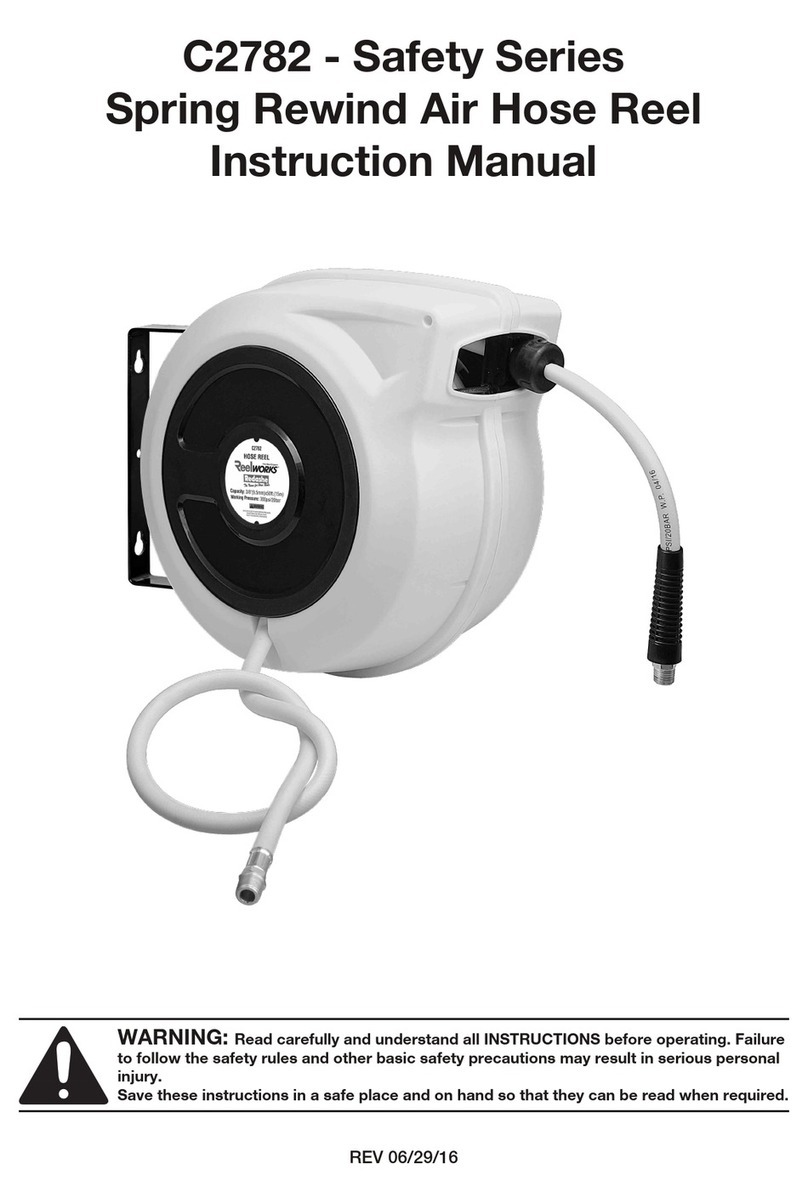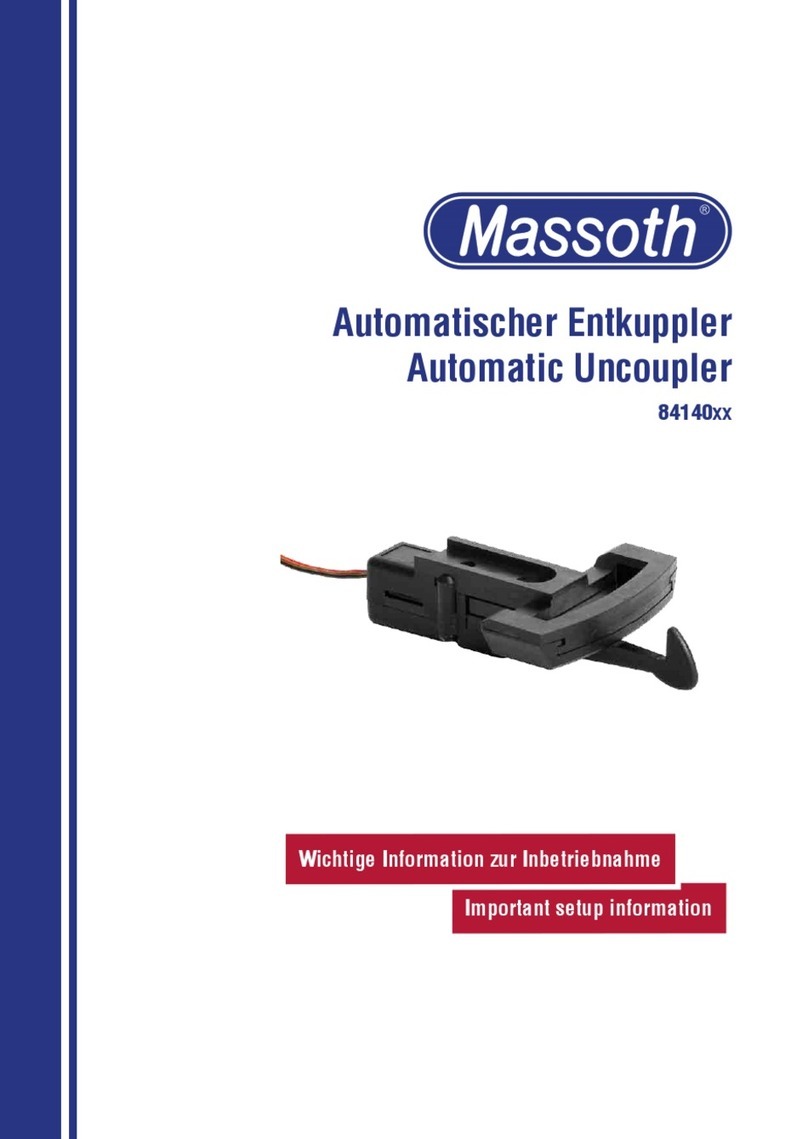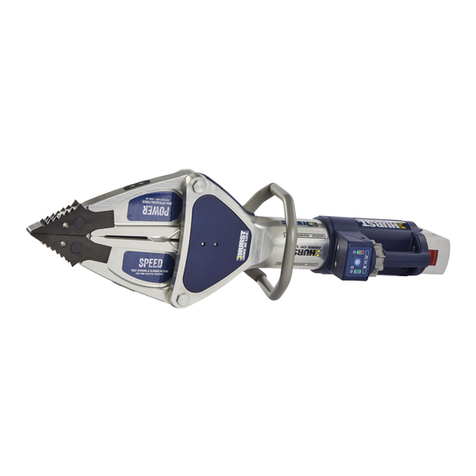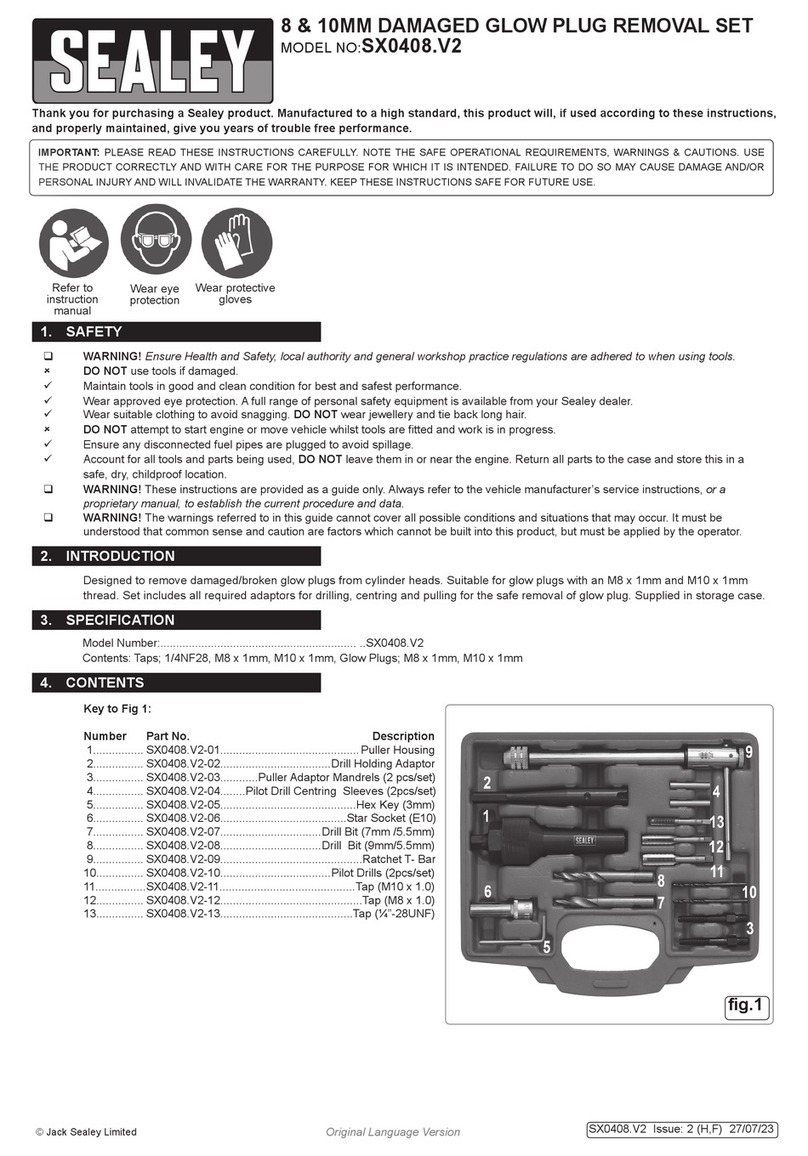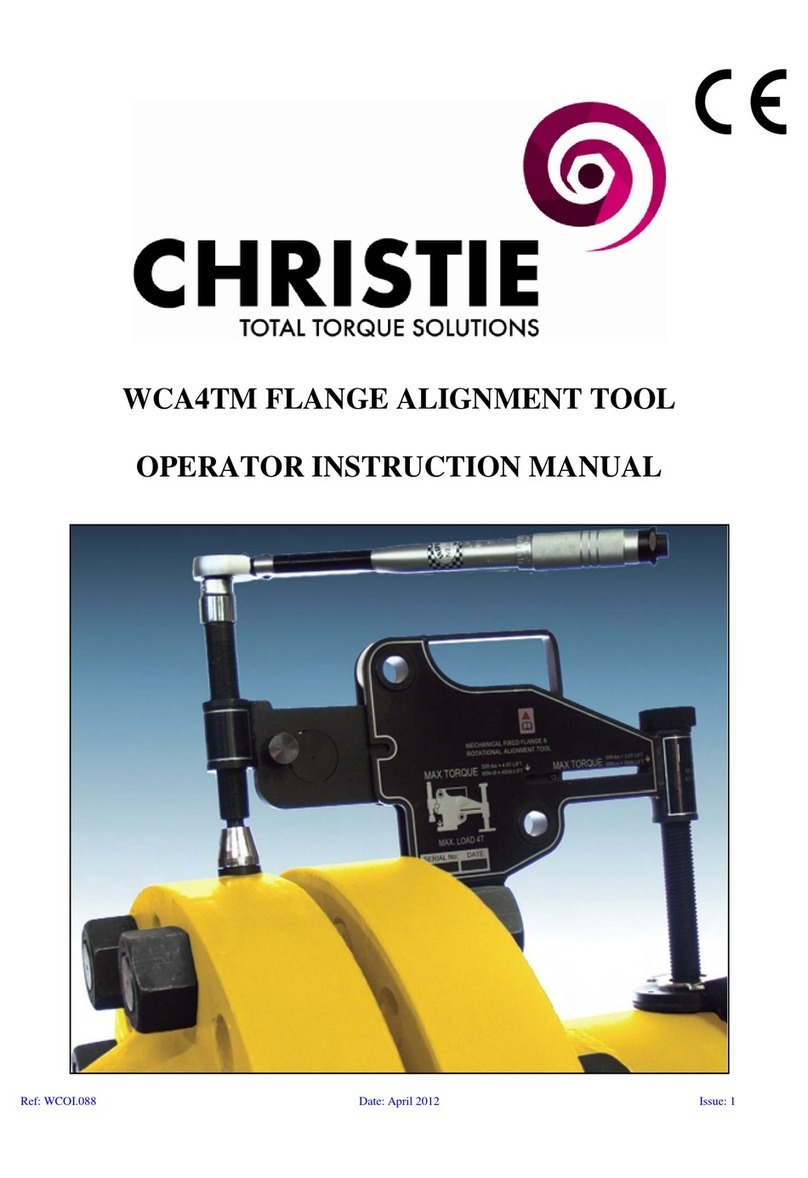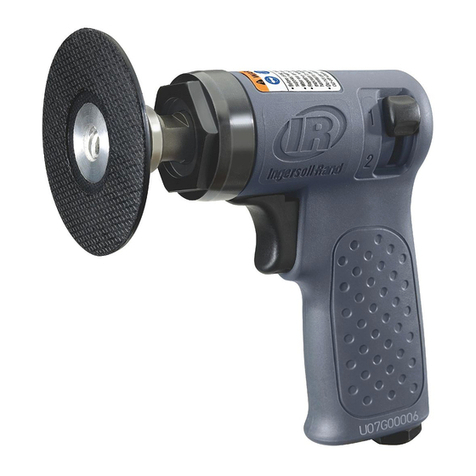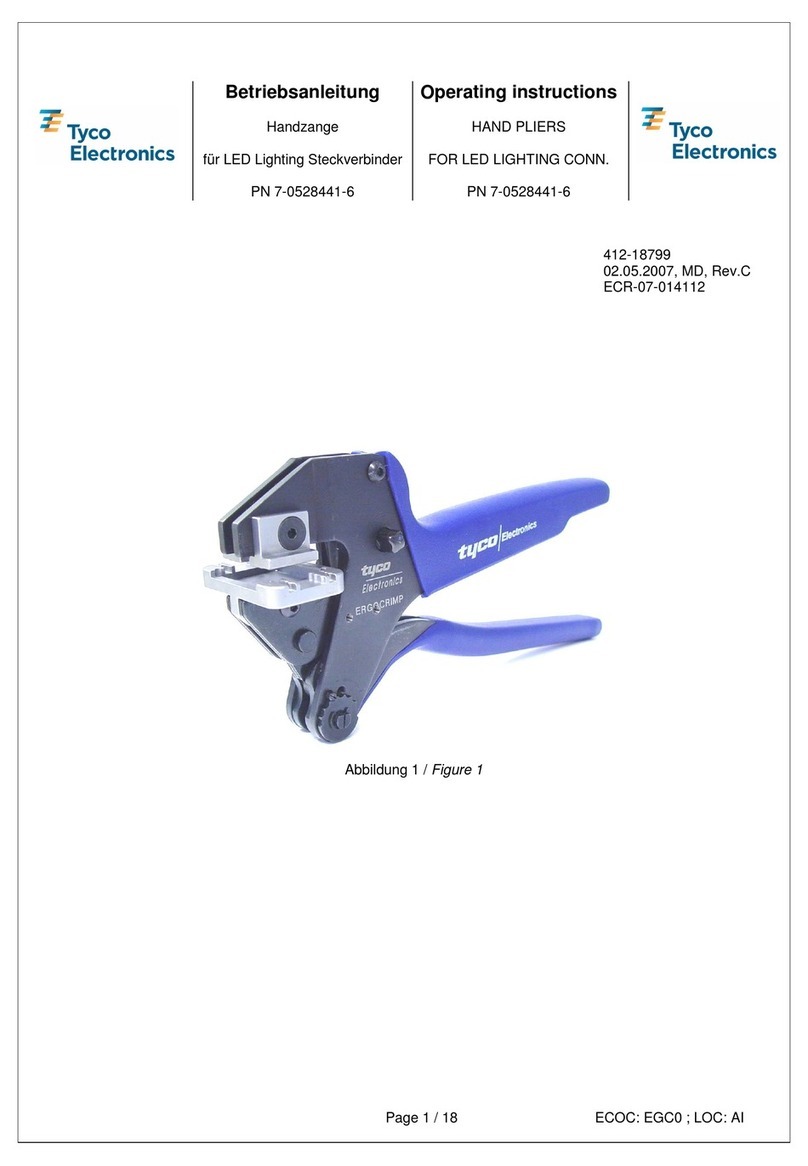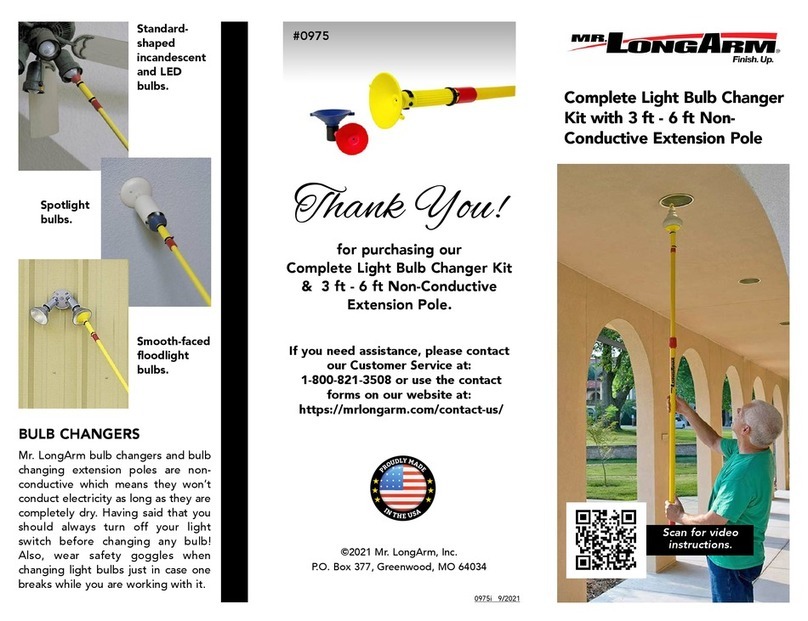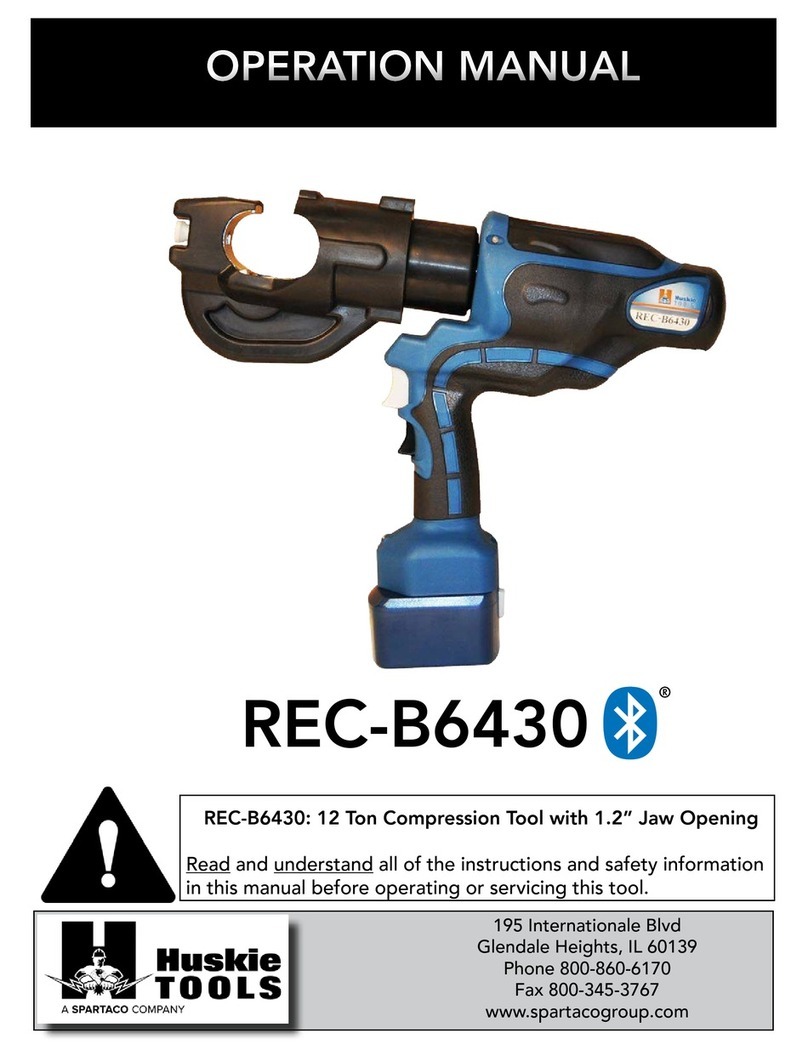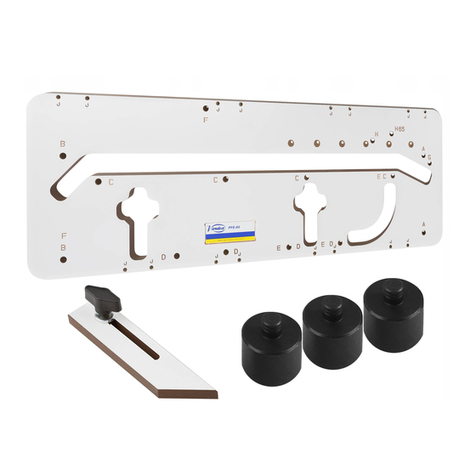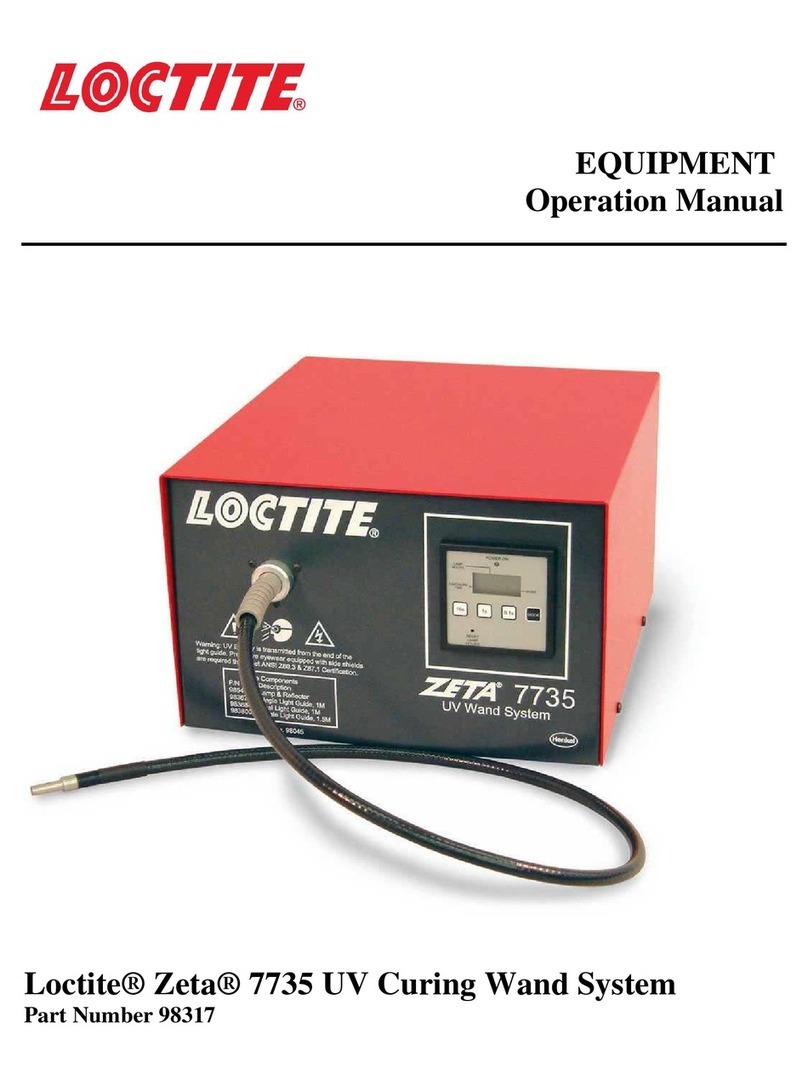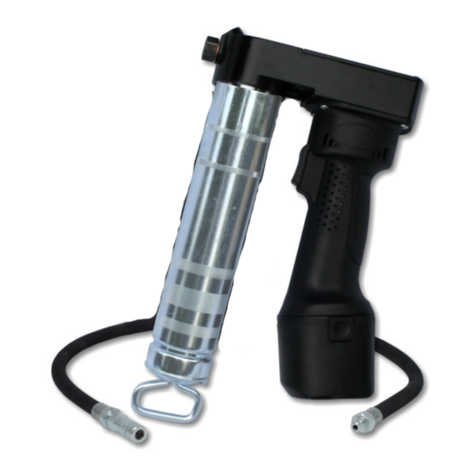Skyboy EX Technical specifications

Flight manual
interplane
Skyboy EX
PILOT'S OPERATING HANDBOOK
and
FLIGHT MANUAL
for
I
IN
NT
TE
ER
RP
PL
LA
AN
NE
E
Airplane European UL category
controlled by aerodynamic devices
LAA Type approval : ULL - 08/94
Serial Number :
Registration Number :
Date : Approved by : __________________
THIS HANDBOOK MUST BE
IN THE AIRPLANE AT ALL TIME
The airplane must be operated by the information and limitations which are presented in this handbook !
EX

Flight manual
interplane
Skyboy EX
Table of contents
1. General information page 1-1 to 1-3
2. Operational limitations page 2-1 to 2-2
3. Emergency procedures page 3-1 to 3-3
4. Normal procedures page 4-1 to 4-4
5. Other information for safe operation page 5-1
6. Performance page 6-1 to 6-2
7. Description page 7-1 to 7-3
8. Ground handling page 8-1 to 8-2
9. Supplements page 9-1
and the set of supplements

Flight manual
interplane
Skyboy EX
LIST OF THE REVISIONS AND THE REPAIRS
21.3.2000
Ordinal No. Number of document -
bulletin It concerns to
pages No. Date of issue : Signature :

Flight manual
interplane
Skyboy EX
Page 1 - 4
1
GENERAL INFORMATION
SKYBOY
is European type certificated side-by-side
two-seat ultralight aircraft, conforms to Czech UL-2,
Germany BFU-DULV and other European UL requirements.
SKYBOY
fills FAI UL category for international sport
competition.
In the U.S.A this
SKYBOY EX
version is the
normal Experimental aircraft.
All metal design, light high-wing airplane with braced
riveted aluminum alloy cage structure, composite semi-
monocoque fuselage pod and aluminum boom supporting
conventional tail surfaces. Tricycle landing gear with
steerable nose wheel.
1.1 DESCRIPTION :
Skyboy EX – standard features :
Aluminum alloy basic tubes/riveted beams skeleton with basic composite canopy with gas struts opened gull-wing
doors ( in the basic version without doors ) and rear composite fuselage fairing.
Wings NACA 4412 with forward 2°swept , pressed ribs, composite wing tips, composite leading edge and 40%
ailerons. Ceconite fabric covered wings and tail. Tubes wing struts, aerodynamic struts for option.
Standard main wheels with hydro-pneumatic shock absorbers and mechanical nose brake. Controlled nose wheel.
Hydraulic brakes for option.
Standard dual control with separate joysticks, rudder pedals, and mechanical controlled elevator trim tabs.
ROTAX 582 engine with electric starter, battery, choke, fuel shut off valve and 3-blade ground adjustable
composite propeller.
4-point safety belts, upholstered seat rest and cushion-seat back. Plywood wall kit and aluminum alloy instrument
panel. Composite “sport car” look seat-back for option.
Standard white color Acrylate light finish.
Basic Instrument set includes : Airspeed indicator ∅3”
Altimeter ∅2”
Fuel Gauge
Rotax / Westach tachometer and cooling fluid temperature gauge
Another aircraft versions :
Skyboy S former European UL version
for lower stall speed with greater wing area and Dacron cowered wing, greater
elevator area, full span ailerons and smaller maximum and cruise speed
. Out of production.
Skyboy UL USA legal FAR Pt 103 ultralight trainer version
of original aircraft with shorter wing, high-lift airfoil P3 with light
leading edge, tube struts, less elevator area and a lot of saving weight changes, to fill USA regulation with take -off weight to 450 kg.

Flight manual
interplane
Skyboy EX
Page 1 - 5
1.2 BASIC TECHNICAL DATA
This handbook is valid for all types of the airplane :
Skyboy EX - European ultralight and USA Experimental version – certificated aircraft version of the airplane
with take -off weight to 450 kg and maximum permissible flight speed 165 km/hour
Skyboy EX 503, Skyboy EX 582, Skyboy EX 912 ... the airplane versions with various ROTAX engines
Skyboy EX SVS 1400, Skyboy EX MZ 202R , Skyboy EX 2706 E, etc … the airplane versions with other
marks of engines (Verner, Zanzottera, Hirth, …)
Skyboy ... E version of the airplane with electric engine starting
Skyboy ... R version of the airplane with rewind hand starting
Concrete identification mark can be composed : for example EX basic version is named Skyboy EX 582 E
General arrangement drawing

Flight manual
interplane
Skyboy EX
Page 1 - 6
1.2.1 DIMENSIONS
Wing span 9,50 m 31.17 ft
Length 6.37 m 20.90 ft
Height 2,13 m 6.99 ft
Wing area 13.50 m
2
145.31 sq ft
Forward swept wing : standard - 2 °
°°
°( 0 °
°°
°recommended for chosen heavier engine )
1.2.2 TIRES - INFLATION
Nose landing gear - Bantam 12x4 160 +20 kPa / 23,5 + 3 psi
Main landing gear - Bantam 16x4 180 +20 kPa / 26,5 + 3 psi
1.2.3 WEIGHTS Skyboy EX
Empty weight 240 kg / 529 lb
Empty equipped weight 268 kg / 591 lb
Maximum take-off weight 450 kg / 992 lb
1.2.4 POWER PLANT
1.2.4.1 Engine ROTAX 503 2V UL 582 UL-2V 912
Pusher configuration
Maximum power 37 kW 48 kW/65 SHP 59,6 kW/ 80 SHP
for 6500 rpm 6500 rpm 5800 rpm
Cylinder volume 496,7 ccm 496,7 ccm 1211 ccm
Dry weight 41 kg 48,5 kg 54 kg
Carburetter 2x BING 36 2x BING 36 2 x BING 64-3
Fuel pump MIKUNI DF 52, electric engine starting + 3,5 kg + battery
1.2.4.2 OPERATION FILLINGS
Fuel 40 l automotive petrol SUPER - BA 96
Oil (for two strokes) Castrol TTS
Proportion of mixture for two strokes Rotax 1 : 50 (see engine manual )
Gear box oil API-GL5 ( 0,5 l )
1.2.4.3 PROPELLERS
SPORTPROP Klassic 160/3/R - composite on the ground adjustable 3-blade ∅
∅∅
∅1.6 m (Rotax 582, 618, 912)
Winglet 165/3/R - on the ground adjustable 3-blade ∅1.65 m (Rotax 582/2.62 or /3.0, Rotax 912)
Winglet 165/4/R - composite on the ground adjustable 4-blade ∅1.65 m (Rotax 582/ 3,47)
Varia - composite in the flight variable pitch 3-blade ∅1.65 m
KŘEMEN PROPELLER SR 26 - wooden fixed two blade ∅1.6 m ( for Rotax 582 )
SR 117 - wooden 3-blade on the ground adjustable ∅1.6 m
SR 2000 - in flight variable pitch wooden ∅1.45 m
1.2.5 EQUIPMENT
BASIC : RECOMMENDED : OPTIONS :
Airspeed indicator Compass vertical velocity indicator
Altimeter Slip indicator Engine hour meter
Fuel gauge Radio / Transceiver
Tachometer Headset
Engine (water) temperature indicator GPS
Kinds and marks of the airplane instruments which are used on the concrete airplane are presented in the chapter 7.

Flight manual
interplane
Skyboy EX
Page 2 - 1
2
OPERATIONAL LIMITATIONS
2.1. Airspeeds
AIRSPEED
abbreviation IAS
mph
IAS
knots IAS
km/h
Maximum permissible speed
V
NE
103 89 165
Maximum maneuvering speed
V
A
71 62 115
Maximum cruising speed
V
C
93 81 150
Minimum ( stall ) speed
V
SO
37 32 60
2.2. OPERATIONAL SPEED RANGE
MEANING OF
THE MARK INCREASED
ATTENTION OPERATIONAL
MODE RANGE INCREASED
ATTENTION MODE LIMIT.
VALUES
Speeds km/h 68 - 85 85 - 120 120 - 165 165
Speeds knots
36 - 46 46 - 65 65 - 89 89
Speeds mph 42 - 53 53 - 75 75 - 103 103
Colored mark yellow arc green arc yellow arc red radial
2.3 OPERATIONAL LIMITATION FOR WIND
Maximum permission velocity component of wind for take-off and landing :
- perpendicularly to the runway axis
4 m/s … 800 ft/min
- parallely to the runway axis
10 m/s … 2000 ft/min
For training flights and practice flights there are valid limitations in accordance with the regulations for ULL.
2.4 LIMITATIONS FOR POWER UNIT
M O D E
503 582 912
Maximum permissible revolutions
6800 rpm 6800 rpm 5800 rpm
max. 5 min
Normal temperature for cylinder heads
to 220
o
C 110 - 130
o
C
110 - 130
o
C
Maximum temperature for cylinder heads
250
o
C 150
o
C 150
o
C
2.5 WEIGHTS
Maximum crew's weight (limit for the cabin and safety belts) 180 kg / 397 lb
Maximum crew weight connected with concrete weighing RECORD of this aircraft (limit for the aircraft) :
Quantity of the fuel in the tank
¼
of fuel
(circa 7 kg)
½
of fuel
(circa 14 kg) Full tank
(circa 28 kg)
Maximum crew weight [ kg ]
Maximum crew weight [ lb ]

Flight manual
interplane
Skyboy EX
Page 2 - 2
Minimum pilot's weight (solo flight) 65 kg / 143 lb (lighter pilot must be balanced to limitation of balance)
For special purpose, connected with concrete weighing RECORD of this aircraft :
Minimum single Pilot weight limit = =
2.6 CENTER OF GRAVITY
Max. forward center of gravity
21 % MAC
Max. rear center of gravity
36,6 % MAC
2.7 OPERATIONAL LOAD FACTORS
Maximum positive load factor in the center of gravity
+ 4
( Ultimate
+ 6
)
Maximum negative load factor in the center of gravity
- 2
( Ultimate
-3
)
2.8 PERMISSIBLE MANOEUVRES
M A N E U V E R S
Maximum inlet speed
- IAS
km/h mph
knots
Strong banked turn to 60 degrees 115 71,5
62
Climbing turn 115 71,5
62
Acrobatic maneuvers and intentional spin
are
PROHIBITED !!!
2.9 KINDS OF OPERATION
The airplane is approved only for day flight according to VFR.
Other kinds of flight are P R O H I B I T E D !!!
2.10 AIR TEMPERATURE LIMITATION
Recommendable maximum ambient temperature
+ 40
o
C
Recommendable minimum ambient temperature
- 10
o
C
2.11 INFLUENCE OF RAIN AND MOISTURE
The airplane lifting surface and control surfaces are covered with fabrics. These fabrics can release owing to
influence of the extensive moisture. It can cause mild decrease airplane performance.
Stability and controllability are not dangerously endangered owing to influence of rain. During the flight with
expressive moisture we still recommend to increase the take-off and landing speed approximately about 5 knots
(6
mph or 10 km/hour).
kg lb

Flight manual
interplane
Skyboy EX
Page 3 - 1
3
EMERGENCY PROCEDURES
Section 3 provides checklist and amplified procedures for coping with emergencies that may occur. Emergencies
caused by aeroplanes or engine malfunction are extremely rare if proper pre-flight inspections and maintenance
are practised. However, should an emergency arise, the basic guidelines described in this section should be
considered and applied as necessary to correct the problem.
ENGINE FAILURE
3.1.1 Engine failure during take-off run
1. Throttle - decrease to idling
2. Ignition - switch off
3. Brake
3.1.2 Engine failure during TAKE-OFF
1. Speed - to keep gliding flight with speed 46 to 48 knots (53-56 mph or 85-90 km/h).
2. Altitude - to altitude 80 ft ( 25 m ): land in take-off direction
- over 80 ft ( 25 m ): choose landing area
3. Course - the best in runway direction, in free space without obstacles, with head wind
4. Fuel valve - shut off
5. Engine igniter - switch OFF
6. Safety harness - tighten
7. Master switch - switch off before landing
8. Land
note :
3.1.3 Engine failure in flight
1. Speed - keep gliding flight with speed 46 to 48 knots (53-56 mph or 85-90 km/h).
2. Altitude - below altitude 80 ft (25 m ) land in take-off direction
- over 80 ft (25 m ): choose landing area
3. Wind - evaluate direction and velocity
4. Landing area - choose free area without obstacles
5. Course - the best in runway direction, in free space without obstacles, with head wind
6. Fuel cock - shut off
7. Engine igniter - switch off
8. Safety harness - tighten
9. Master switch - switch off before landing
10. Land
3.1.4 Vibration
If any forced aeroplane vibrations appear, it is necessary:
1. To set engine speed to such power rating where the vibrations are lowest.
2. To land on the nearest airfield or to perform a emergency landing
Skip 6-10 if necessary

Flight manual
interplane
Skyboy EX
Page 3 - 2
3.2 IN –FLIGHT START
1. Speed - gliding at 46 to 48 knots (53-56 mph or 85-90 km/h)
2. Altitude - check
3. Landing area - choose according to altitude
4. Master switch - switch on
5. Fuel cock - open
6. Choke - as necessary (for cold engine)
7. Throttle - for 1/3 power
8. Ignition - switch on
9. Starter - push button (or pull the rewind starter cable grip) to start the engine
If the engine cannot be started up, increase the flight speed so that air flow can rotate the propeller,
thus enabling engine starting.
WARNING
The loss of altitude during in-flight engine starting is about 650 ft (200 m) and must be taken into consideration.
3.3 EMERGENCY LANDING
3.3.1 Emergency landing
1. Emergency landing is generally carried out in case of engine failure when the engine cannot be
started up.
2. Speed - 110 km/h (60 kts)
3. Trim - trim the aeroplane
4. Safety harness - tighten
5. Flaps - as needed
6. Radio station - report your location if it is possible
7. Fuel cock - shut off
8. Ignition - switch off
9. Master switch - switch off
3.3.2 Landing with a flat tire
1. When floating at landing, keep the damaged wheel above ground as long as possible using ailerons
2. Maintain the direction at landing run, applying foot control
3.3.3 Landing with a defective landing gear
1. If the main landing gear is damaged, perform touch-down at the lowest speed possible and maintain
direction at landing run, if possible
If the nose wheel is damaged perform touch-down at the lowest speed possible and hold the nose wheel over a
runway by means of the elevator control as long as it is possible

Flight manual
interplane
Skyboy EX
Page 3 - 3
3.4 FIRE, SMOKE
3.4.1 Fire on ground
1. Fuel cock - shut off
2. Throttle - full
3. Master switch - switch off
4. Ignition - switch off
5. Abandon the aeroplane
6. Extinguish fire if it is in your power or call for a fire brigade.
3.4.2 Fire during take-off or in flight
1. Fuel cock - shut off
2. Throttle - full ( maximum )
3. Speed - to keep gliding flight with speed 46 to 48 knots (53-56 mph or 85-90 km/h)
4. Master switch - switch off after using up fuel in carburettors and engine stopping
information : Time, needed for exhaustion of the fuel rest in carburetors takes approximately 30 seconds.
5. Altitude - to altitude 80 ft ( 25 m ) the landing in take-off direction
- over 80 ft (25 m ): choose emergency landing area
6. Course - recommended is in runway direction, in free space without obstacles, with
head wind
7. Ignition - switch off
8. Emergency landing - according to the item 3.2 Land and brake
9. Abandon the aeroplane
10.Extinguish fire if it is in your power or call for a fire-brigade
3.5 CARBURETOR ICING
Carburettor icing mostly occurs when getting into an area of ice formation. The carburettor icing shows
itself through a decrease in engine power and an increase of engine temperatures.
To recover the engine power, the following procedure is recommended:
1. Speed - 60 kts ( 110 km/h )
2. Throttle - set for 1/3 power
3. If possible, leave the icing area
4. Increase gradually the engine power to cruise conditions after 1-2 minutes
If you fail to recover the engine power, land on the nearest airfield (if possible) or depending on circumstance,
precautionary landing
3.6 RECOVERY FROM UNINTENTIONAL SPIN
WARNING
Intentional spins are prohibited! Spin characteristics of this airplane have not been tested.
A procedure bellow is only for information.
There is no tendency to entry spontaneously in uncontrollable spin if normal pilot techniques are used.
In case of recovery from intentional spin a standard procedure can be used:
1. Throttle - reduced to idle
2. Control stick - ailerons neutralised
3. Rudder pedals - full opposite rudder
4. Control stick - forward elevator control as required to stop a spinning
5. Rudder pedals - immediately after stop of a rotation neutralise the rudder
6. Recovery the dive

Flight manual
interplane
Skyboy EX
Page 4 - 1
4
NORMAL PROCEDURES
Chapter 4 includes lists of standard operations and recommended procedures, needed for normal aircraft
operation.
4.1 PRE - FLIGHT INSPECTION
1. COCKPIT
- Engine igniter switch OFF
- Attachment and position of the pilot seat
- Check of the safety belts
- Condition of the instruments equipment
- Function of the hand control
- Function of the directional control
- Attachment and freedom of engine control
- Brake function
- Condition of the laminate shell and transparent canopy
2. LANDING GEAR
- Condition of the landing gear and brake control
- Attachment of the landing gear and check of the shock absorber
- Inflation of the tires
3. WING
- Attachment of the struts and locking of the connecting bolts
- Checking of the skin and skin strain
- Condition and deflection of the ailerons, skin strain and locking of the steering hinges
- Checking of the ropes of wing skin strain
4. POWER PLANT
- Condition of the engine, propeller and locking of bolted connection
- Condition of the silentblock and engine attachment to fuselage structure
- Condition and attachment of the exhaust with special emphasis on SPRING
- Engine fixation
- Condition of the ignition system
- Condition of the fuel system and pump
- Attachment and fixation of the fuel tank
- Checking amount of fuel
- Attachment condition of the accumulator + input conductors ( versions E )

Flight manual
interplane
Skyboy EX
Page 4 - 2
5. CONTROL CABLES
- condition and tension of the rudder cables and elevator-trim tab ropes
- checking of locking of the turnbuckles and guide-bowdens and hoses
6. TAIL UNIT
- condition of the horizontal and vertical surfaces, skin strain
- checking of the elevator and rudder deflection and locking of the hinges
- tension of the stabilizer ropes, locking of the turnbuckles
- checking of the tail skid
4.2 BEFORE ENTRANCE INTO THE PILOT'S COCKPIT
1. Wing surface - checking of the entirety and strain skin, checking of the strut system
2. Tail unit surface - checking of the skin entirety
- checking of the bracing ropes
3. Dismantling juncture - checking of the locking
4. Power unit - condition of the propeller fittings
- engine inspection and his attachment
5. Fuel system - checking of the fuel quantity
- checking of shut-down of fuel tank
6. Pilot’s cockpit - attachment and condition of the safety belts
- purity of the transparent canopy
4.3 AFTER ENTRANCE INTO THE PILOT'S COCKPIT
1. Engine igniter - switch OFF
2. Directional control - free movement
(after lifting of the nose wheel by pressure of tail unit girder by assistant)
3. Hand control - free movement
4. Brake - checking of function
5. Instruments - checking of values
6. Safety belts - button up and tighten up
4.4 ENGINE STARTING
1. Engine igniter - switch OFF
2. Fuel condition lever - open
3. Engine throttle - idling speed during the cold engine start use saturator
4. Hand fuel pump - overfull carburetor
5. Brake - apply the brake or the main gear must be secured by Scotch blocks
6. Engine igniter - to position S W I T C H O N
7. Starting - carry out the starting by handle of manual staring or by the pushbutton
if the airplane has electrical starting.
After engine starting increase revolutions moderately and switch off the saturator as soon as possible.
8. Engine revolutions - idling speed

Flight manual
interplane
Skyboy EX
Page 4 - 3
4.5 ENGINE TEST
1. Operating minimum - 2 minutes are minimum time since engine starting. Warm up the engine
with increasing revolutions (2500 - 3000 rpm )
2. Handle control - neutral position
3. Brake - the brake tighten up, the main gear must be secured by Scotch blocks or an
assistant must hold the airplane
4. Acceleration - reach maximum revolutions during 3 sec. watch equability of engine
starting and regularity of engine operation
5. Max. power mode - watch regularity of engine operation
6. No-load speed - equable engine operation
N O T I C E :
4.6 TAXIING
On an airfield the taxiing speed is maximum 5 kts (
10 km/h / 6 mph
= walking speed )
4.7 PROCEDURES BEFORE TAKE-OFF
1. Directional control - freedom of movement
2. Handle control - freedom of movement
3. Instruments - checking of values, fuel quantity
4. Safety belts - checking of connection and tightness
5. Fuel condition lever - position " O P E N "
6. Change over switch for igniter - position " O N "
7. Balance - for two pilots - position "heavy on the tail"
- for solo flight - position " neutral "
8. Choke - checking of the shut-down and locking
9. Checking of the space for final airport pattern
- stop on the holding patter upright to the runway on the runway threshold
10. Announce to radio service ( if the airplane is equipped with a transceiver )
4.8 TAKE - OFF
1. Checking of opening fuel
2. Instruments
3. Clear runway
4. Checking of time
Set the airplane in motion by continuous increasing power.
After reach out of speed 35 knots (40 mph or 65 km/hour) use the elevator for lift out of the airplane.
After attainment of speed 40 to 46 knots (47 to 53 mph or 75 - 85 km/hour ) climb with speed 400 to 1000 ft/min
( 2 to 5 m/s ) - it depends on the weight of airplane and type of the engine.
N O T I C E :
TAKE - OFF IS P R O H I B I T !!!
- If the engine operation is irregular
- If the wind speed exceed permit limits
Carry out the engine test up the wind !

Flight manual
interplane
Skyboy EX
Page 4 - 4
4.9 CIRCUIT FLIGHT
After attainment circuit height adjust the speed of horizontal flight on the value 43 to 54 knots
(50 to 62 mph or 80 - 100 km/hour )
by decrease of revolutions.
4.10 GLIDING FLIGHT
After attainment of suitable height for gliding flight or when an emergency situation arises, take over the airplane
into the gliding flight with starting speed 40 knots
(47 mph or 75 km/hour ).
By flight height and situation adjust the speed to the safety gliding speed 46 to50 knots
( 53 to 56 mph or 85 - 90
km/hour ).
At this speed finish all phases of landing.
4.11 ELEMENTAL PROCEDURES
ON THE LEVEL OF LANDING T
1. Revolutions - increased idling or engine idling
2. Safety belts - tightened
3. Checking of circuit - T space and runway
- space between 3. and 4. turn
4. Checking of fuel
4.12 LANDING
Adjust angle of glide so that it corresponds with the safety gliding speed 46 to51knots
(53 to 60 mph or 85 - 95 km/hour).
After leveling out (circa height 16 ft , 5 m ) in dwell, decrease flight speed by continuous pulling of the elevator,
until the airplane lands with speed circa 35 knots
(40 mph or 65 km/hour )
at first on the main gear. After finishing
elevator effect the airplane lands on the nose-wheel undercarriage.
4.13 ELEMENTAL PROCEDURES AFTER LANDING
1. Revolutions - according requirement
2. Speed - adjust on rolling speed maximum 5 knots
(6 mph or 10 km/hour )
After landing run quickly leave runway usually in direction of the alignment of landing T axis.

Flight manual
interplane
Skyboy EX
Page 5 - 1
5
OTHER INFORMATION FOR SAFETY OPERATION
5.1 GENERALLY
All given information and procedures with recommended piloting technique are valid for following flight
cases. A pilot must not get into these flight cases when he observes normal and emergency procedures .
5.2 STALLS AND RECOVERY TO NORMAL FLIGHT
5.2.1 WING LEVEL STALL
Pull the elevator reasonably in successive steps, the airplane will has speed 34 knots (40 mph or 64 km/hour
). During this speed the altitude control bears on the stop, the airplane bow decreases and the airplane
descends in successive steps.
Piloting technique for recovery to normal flight - reasonably push the elevator. Don't use the ailerons
when the airplane is yawed along longitudinal axis during the stall. Level the directional control after
descent and the restoration of rudder efficiency.
5.2.2 STALLING SPEED
WEIGHT OF
AIRPLANE RATE OF
ENGINE
Stalling SPEED
[ kg ] IAS
[ km/hour ]
IAS
[ mph ] IAS
[ knots ]
450 - MTOW idling speed
64
40 34
300 - solo flight idling speed
55
34 30
comment :
Stalling speed acquirement is showed by the tilting of airplane nose down, or higher increasing of negative
vertical speed .
Horizontal flight can be returned after lost of height approximately 150 feet ( 50 meters ).
During the stall airplane is fully controllable.

Flight manual
interplane
Skyboy EX
Page 6 - 1
6
PERFORMANCE
6.1 GENERALLY
These performance are valid for the standard version of airplane with maximum take-off weight 450 kg with
usual flying without wind in ISA conditions - 0 m MSA by the temperature 15
°
C.
6.1.1 CALIBRATION OF THE SPEED MEASUREMENT SYSTEM
IAS [ km / h ] 60 70 80 90 100
110
120
130
140
150
160
170
CAS [ km / h ]
IAS [ knots ] 30 40 50 60 70 80 90
CAS [ knots ]
6.2 TAKE-OFF AND LANDING
These values are determined for take-off and landing from a dry grass airfield and concrete airstrips without
slope of runway and without wind.
6.2.1 LENGTH OF TAKE-OFF RUN AND TAKE-OFF
JČ9.3.2000
Skyboy
503 582 912
Take-off run grass 120m/ 400 ft
100m / 330 ft
[ m / ft ] concrete
100m / 330 ft
85m / 280 ft
Take-off over 15m grass 250m/ 820 ft
200m/ 660 ft
[ m / ft ] concrete
230m/ 750 ft
185m/ 610 ft
6.2.2 LENGTH OF LANDING AND LANDING RUN
JČ9.3.2000
Skyboy
503 582 912
Landing over 15 m grass 250m/ 820 ft
250m/ 820 ft
[ m / ft ] concrete
280m/ 920 ft
280m/ 920 ft
Run without braking
grass 100m/ 330 ft 100m/ 330 ft
[ m / ft ] concrete
130m/ 430 ft
130m/ 430 ft
6.3 CLIMBING
6.3.1 OPTIMAL CLIMBING SPEED
JČ9.3.2000
FLIGHT
SOLO FLIGHT
MTOW - 450 kg
ALTITUDE SPEED
RATE OF CLIMB
SPEED
RATE OF CLIMB
[ m ]
[ ft] km/hr
knots [ m/s ] ft/min km/hr
knots [ m/s ] ft/min
503
0 -
500
0 - 1500
80 45 2,5 490 90 49 2,1 410
582
0 -
500
0 - 1500
80
45
4,8
950
90
49
3,2
630
912
0 -
500
0 - 1500
80 45 6 1 200 90 49 4,5 900

Flight manual
interplane
Skyboy EX
Page 6 - 2
6.3.2 CEILING
Service ( practical ) ceiling 3 000 to 3 500 m, 5 000 to 5 500 with four stroke engines ( Rotax 912 etc)
6.4 GLIDING FLIGHT WITH INOPERATIVE ENGINE
JČ9.3.2000
PERFORMANCE DOUBLE SOLO SPEED IAS
THE LEAST DESCENT
690 ft/min
( 8,4 m/s
) 490 ft/min
(
2,5 m/s
) 46 knots
( 85 km/hour )
THE BEST GLIDING
1 : 6,8
1 : 9,7
46 knots
( 85 km/hour )
6.5 HORIZONTAL - CRUISE FLIGHT
6.5.1 SPEEDS AND FUEL CONSUMPTIONS
JČ9.3.2000
TYPE MODE REVOLUTIONS
SPEED CONSUMPTION
[ rpm ] [km/h]
knots [ l / h ]
503 MAX. CONTINUOUS POWER 6 500 115 62 18
CRUISE POWER 5 900 90 46 12
MAX. CONTINUOUS POWER 6 500 145 78 20
582 CRUISE POWER 5 000 110 59 13
LONG-RANGE CRUISE POWER
4 700 100 54
estimate
11
MAX. CONTINUOUS POWER 5 500 162 87 18
912 CRUISE POWER 5 000 130 70 12
LONG-RANGE CRUISE POWER
4 000 100 54
estimate
9
6.5.2 FLIGHT RANGE AND ENDURANCE
( stat. miles )
JČ9.3.2000
TYPE MODE RANGE ENDURANCE
[ miles / km ] [ min ] [ hour : min ]
503 MAX. CONTINUOUS POWER
155
miles
/ 250
km
135 2 : 15
CRUISE POWER
186
miles
/ 300
km
200 3 : 20
MAX. CONTINUOUS POWER
180
miles
/
290
km
120 2 : 00
582 CRUISE POWER
200
miles
/
330
km
180 3 : 00
LONG-RANGE CRUISE POWER
230
miles
/
370
km
220 3 : 40
MAX. CONTINUOUS POWER
220
miles
/ 360
km
135 2 : 15
912 CRUISE POWER
270
miles
/ 430
km
200 3 : 20
LONG-RANGE CRUISE POWER
290
miles
/ 470
km
270 4 : 30

Flight manual
interplane
Skyboy EX
Page 7 - 1
7
AIRCRAFT DESCRIPTION
Chapter 7 describes basic layout of the aircraft, to explain all basic needed information for the Skyboy
operation.
7.1COCKPIT
Followed picture describes positions of all basic control levers, drivers, installation of instruments and cabin
equipment, needed for basic pilot information about correct use of this plane:
ACCOMMODATION:
Individual integral side-by-side seats for two persons in enclosed cabin, the main pilot’s seat being to port.
Special shape of the integral composite seat rest enables not only better comfort, but higher pilot safety
during the crash. Cushion seat rests and seat backs and four point safety belts are standard.
Sport car – style upholstered composite seat rests and gull-wing doors opened by gas struts for option.
Dual control standard: dual control sticks, dual rudder pedals, dual throttles and central elevator trim
handle. Choke and fuel valve levers standard, primer and hydraulic brakes controlled by pedals on the port
side ( left ) position for option.

Flight manual
interplane
Skyboy EX
Page 7 - 2
7.2 INSTRUMENT PANEL
Skyboy instrument panel is equipped with the standard airspeed indicator, altimeter, tachometer, cylinder head
or cooling fluid indicator and fuel gauge.
Provision is made to install the optional compass, bank indicator, vertical velocity indicator, or exhaust temperature gauges,
engine-hour counter, Volt-meter, oil pressure gauge, radio/transceiver, headsets, intercom, GPS etc.
Installed instruments
Basic set :
Pos.
Name
Type manufacturer serial number
1
Air Speed indicator
2
Altimeter
3
Fuel gauge
4
Tachometer
5
Engine temperature indicator
- CHT
Recommended addition :
6
Compass
7
slip indicator
Options :
8
Vertical speed indicator
9
10
Engine hours counter
11
Engine exhaust temperature
indicator
12
Oil temperature indicator
13
Oil pressure indicator
14
15
Volt meter
16
17
Transceiver (Radio)
18
Headset
19
Intercom
20
21
Navigation - GPS
22
23
24
25
26
27
Table of contents
